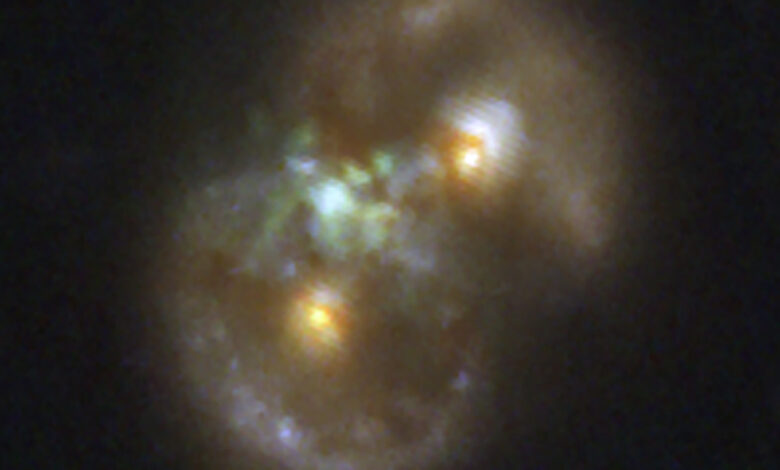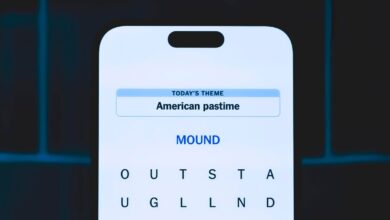Webb spots ‘Infinity Galaxy’ that sheds light on black hole formation

Discoveries keep pouring out of the James Webb Space Telescope (JWST). Researchers observed an unusual cluster, which they dubbed the Infinity Galaxy. It appears to support a leading theory on how some supermassive black holes form.
Although “Infinity Galaxy” sounds like a place Thanos would hang out, it merely describes its appearance. Two compact, red nuclei, each surrounded by a ring, give the cluster the shape of an infinity symbol.
What’s inside is more interesting. (After all, this is a much lower-res image than some of the eye candy the Webb telescope has yielded.) Researchers believe the Infinity Galaxy formed when two spiral galaxies (the nuclei in the image) collided. Between them lies a young supermassive black hole within an enormous cloud of gas.
Supermassive black holes can range from hundreds of thousands of times the size of our sun to millions or billions of times its size. This one is about a million times as big.
The Infinity Galaxy lends weight to the direct collapse theory of black hole formation. As you probably know, most black holes form when massive stars collapse. The presence of supermassive ones is harder to explain.
One theory proposes that smaller black holes merge over time to form a supermassive one. The problem there is that some supermassive black holes formed soon after the Big Bang. So, scientists think some supermassive ones form instead from the collapse of gas clouds, much like the one we see here. The Infinity Galaxy may be the best evidence yet for that direct collapse hypothesis.
One of the paper’s lead authors summarized the findings. “By looking at the data from the Infinity Galaxy, we think we’ve pieced together a story of how a direct collapse could have happened here,” Pieter van Dokkum wrote in a press release. “Two disk galaxies collide, forming the ring structures of stars that we see. During the collision, the gas within these two galaxies shocks and compresses. This compression might just be enough to form a dense knot, which then collapsed into a black hole.”
The team can’t definitively confirm the theory from their current data. “But we can say that these new data strengthen the case that we’re seeing a newborn black hole, while eliminating some of the competing explanations,” van Dokkum added. “We will continue to pore through the data and investigate these possibilities.”
Source link






